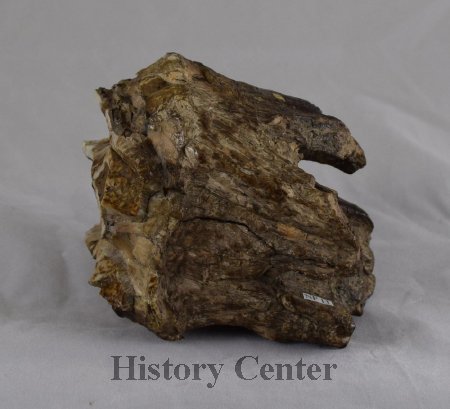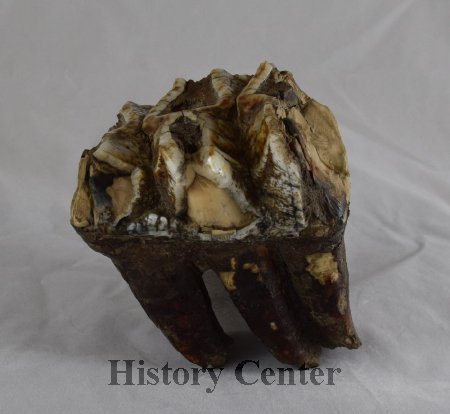Date:
About 9,000 to 11,000 BCE
Title:
Mastodon Molor
Description:
Mastodon Capital of Indiana
As the continental glaciers that shaped the early North America land mass began to dramatically re-cede and dense pine and fir forests dominated the region, an early culture developed around hunting mastodons that roamed the forests. Mastodons are a distant relative of elephants, and mammoths that lived in herds in forested regions. Being situated at the western edge of the Great Black Swamp, the forests provided an ideal habitat for mastodons while the swampy bog areas served to preserve their remains.
Mastodon bones have been unearthed in most of Indiana's ninety-two counties with several from Allen County. The Fort Wayne Gazette reported in 1867 the discovery of three partial mastodon skeletons near Huntertown, and nearly one hundred years later, more turned up in a peat bog on private property two miles south of Angola. The bog was drained and a complete mastodon skeleton and the skull of a baby mastodon were discovered. This molar belonging to a mastodon would have been used for grinding the dense vegetation that made up a mastodon's diet.
As the continental glaciers that shaped the early North America land mass began to dramatically re-cede and dense pine and fir forests dominated the region, an early culture developed around hunting mastodons that roamed the forests. Mastodons are a distant relative of elephants, and mammoths that lived in herds in forested regions. Being situated at the western edge of the Great Black Swamp, the forests provided an ideal habitat for mastodons while the swampy bog areas served to preserve their remains.
Mastodon bones have been unearthed in most of Indiana's ninety-two counties with several from Allen County. The Fort Wayne Gazette reported in 1867 the discovery of three partial mastodon skeletons near Huntertown, and nearly one hundred years later, more turned up in a peat bog on private property two miles south of Angola. The bog was drained and a complete mastodon skeleton and the skull of a baby mastodon were discovered. This molar belonging to a mastodon would have been used for grinding the dense vegetation that made up a mastodon's diet.





